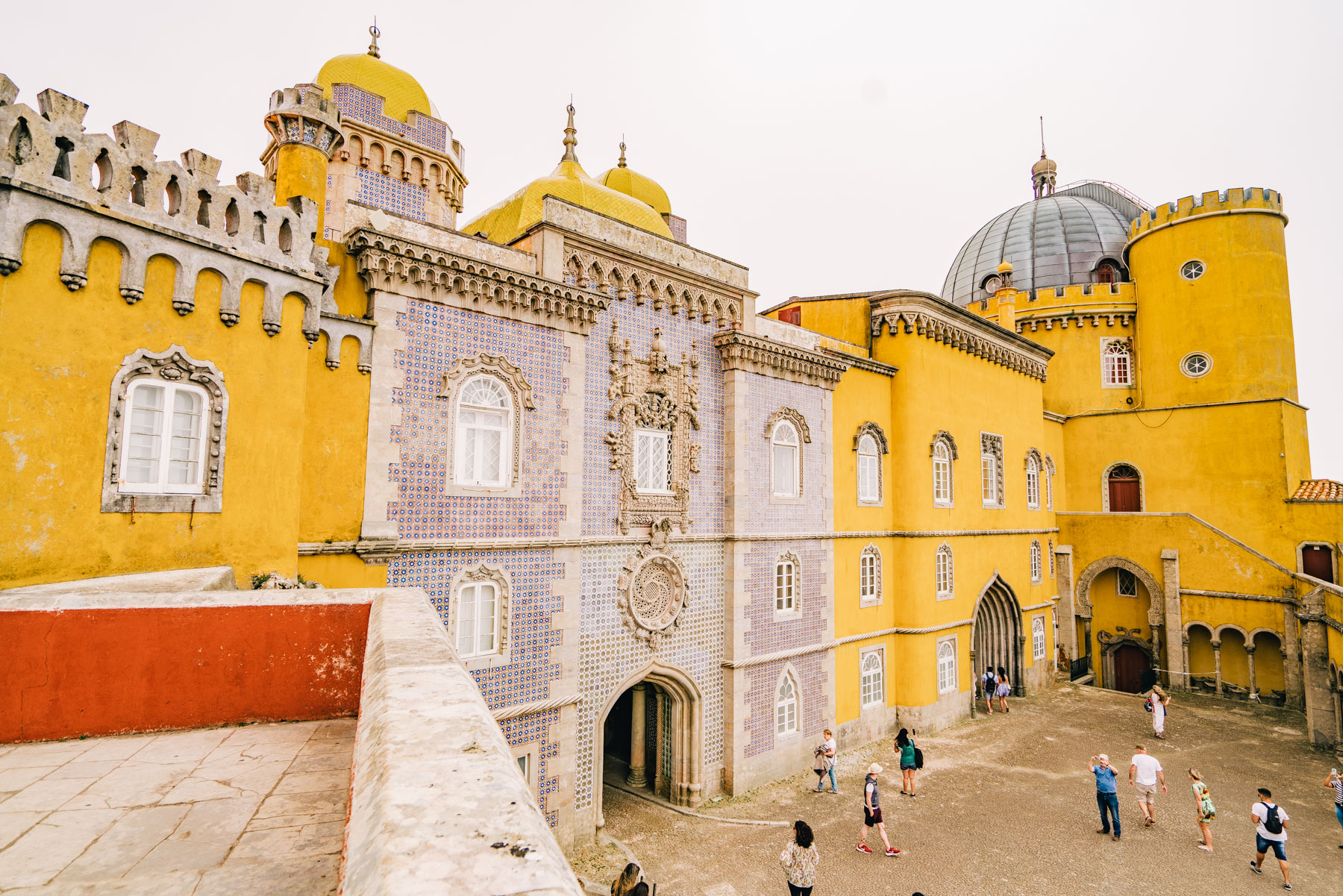
Sintra, Portugal is possibly the most picture-perfect European city I’ve visited. While exploring the city we simply couldn’t get over the fun splashes of color and epic castles (one after another).
Turns out Sintra used to be a playground for the wealthy and it shows. There’s a high concentration of palaces and castles in Sintra so you’ll need to be clear on your priorities.
And that’s where I come in. I’ve visited Sintra three times and have toured every palace and castle in town. I hope this list of the best castles in Sintra is helpful for you and makes planning your visit a little easier. Don’t hesitate to reach out with questions.
The city is ripe for exploration and the castles make the adventure that much sweeter. So without further ado, let’s get to it!
Tips for Visiting the Castles in Sintra
Wear comfortable shoes: You’ll be doing a lot of walking while visiting Sintra. Make sure you’re wearing comfortable shoes so you don’t get blisters while climbing ancient castles and strolling down charming hilly streets.
Don’t forget sunscreen! I swear by this sunscreen, I discovered it in France and now buy it in bulk. You’ll never catch me without it! Shade is hard to come by while explore the castles in Sintra, so lather up adequately and bring some extra sunscreen with you.
Want to see the best castles in Sintra in one day? Read: How to Spend One Day in Sintra.

Best Sintra Castles & Palaces
#1. Pena Palace
Arguably the most popular palace in Sintra, Pena Palace needs no introduction. This colorful Sintra castle is an internet sensation, high on the must-see list for anyone visiting Sintra. But the hype is completely warranted.
Built in the 12th century, Pena Palace serves as the crown jewel of the Sintra Hills. Engrossed in a lush forests and beautiful gardens, the palace combines the beauty of nature with the splendor of royal wealth harmoniously.
Did you know? On a clear day, Pena Palace is visible from Lisbon.
Quick History on Pena Palace
To understand how the most famous palace in Sintra came to be, it’s important to know the history. Sometime in the 12th century there was a chapel dedicated to Our Lady of Pena built atop the hill Pena Palace sits on today. Years later, King Manuel I ordered the construction of a monastery to be built on the site.
Everything was fine and dandy until the great Lisbon earthquake of 1755, which reduced the monastery practically to ruins. The monks were not easily deterred and the monastery remained active for an entire century until the abolition of religious orders in Portugal (1834).
At that point, Pena Palace was abandoned, destined to be forgotten until King Ferdinand II stepped in. Enchanted by the breathtaking nature upon visiting Sintra, Ferdinand decided to transform the monastery into a summer palace for the Portuguese royal family (pinkies up).
When King Ferdinand died in 1885 the palace was bequeathed to his second wife, the Countess of Edla. The palace was then sold to King Luis (Ferdinand’s son) who wanted to keep the palace in the royal family.
Not hard to see why! This is one of the most beautiful palaces in Sintra, no wonder the royal family continued to use it until the monarchy fell in 1910. Afterwards, Pena Palace was classified as a National Monument and purchased by the Portuguese State.
Interesting fact: Queen Amelia, Portugal’s last queen, spent her final night at Pena Palace before leaving the country in exile.
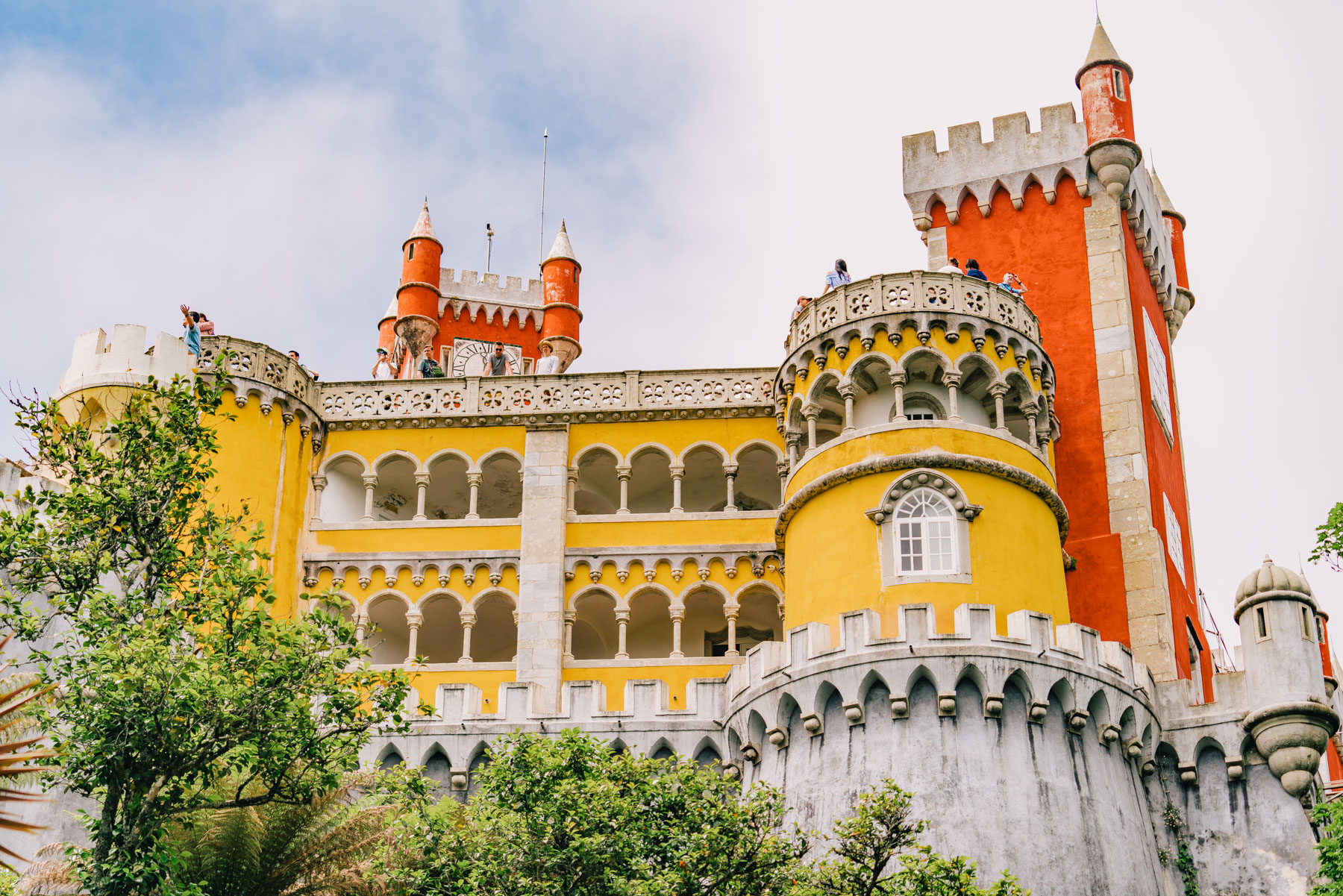
Visiting Pena Palace (2 Options)
There’s two options for visiting Pena Palace. The first option is a tour of the actual palace and surrounding park. The second option gets you into the gardens, but doesn’t include a tour of the inside. If helpful, all these photos are taken from the gardens.
We originally planned to tour the interior for the wait was over 2 hours long, so we skipped it. There’s no way we were going to spend two hours of our precious vacation day standing in line. We did not tour the interior but wish we could have. Well, it’s always nice to have a reason to return.
If you opt to tour the palace, allocate at least 2-3 hours because of the long lines. We toured the gardens and spent an hour enjoying this stunning Sintra palace.
Head’s up: If you want to tour the interior of Pena Palace, arrive as early as possible (preferably when it opens). We arrived mid-day and the queue to get in was 2+ hours long so we decided to skip the inside.
Things to see at Pena Palace
- Explore the park and visit the cafe on the terrace. Enjoy sweeping views of the lush forest beneath you while sipping an overpriced cafe.
- Tour the interior of the palace. Just remember to get there early to avoid unbelievably long lines. For more photos of Pena Palace, check out this quick post.
Pena Palace is what most folks picture when thinking about the best castles in Sintra, thankfully it doesn’t disappoint. The fun colors are reason alone to visit.
Pena Palace admission:
- Gardens: €7.50/€6.50/€26 (adult/child/family).
- Palace & Park: €14/€12.50/€49 (adult/child/family).
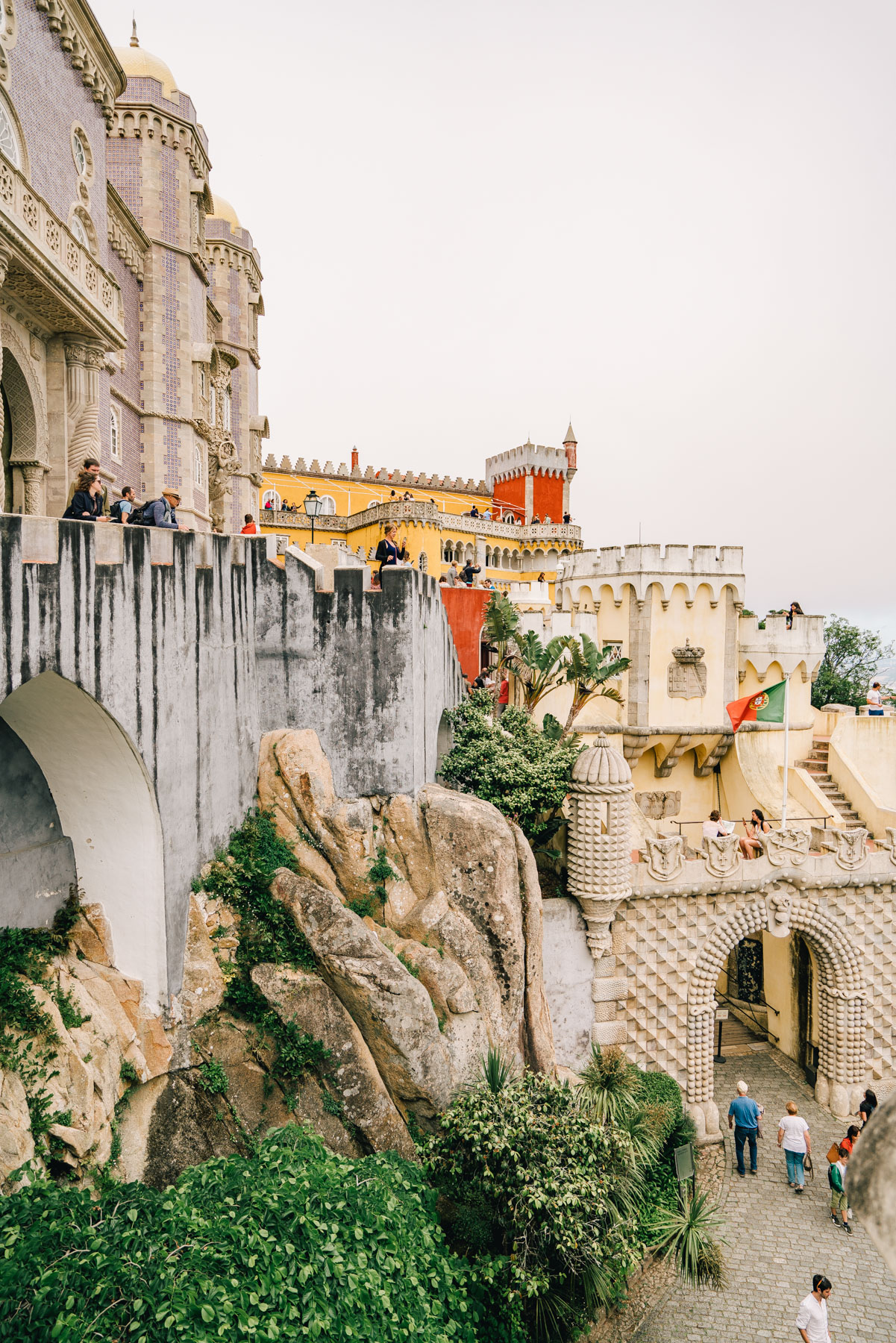
Sintra Castles (Bonus): The Chalet of the Countess of Edla
While exploring one of the most colorful castles in Lisbon, make sure to admire the Chalet of the Countess of Edla. When Queen Maria II (the wife of King Ferdinand II) died, the king remarried an opera singer named Elise Hensler, who later became the Countess of Edla.
Together the pair built a chalet within the Park of Pena for the Countess. It’s an elaborate Alpine-inspired building that spared no expense. Touring it was a highlight of our time in Sintra, so I highly recommend popping in.
#2. Monserrate Palace
Of all the incredible palaces in Sintra, Monserrate Palace is my personal favorite. Gothic, Arabic and Indian architectural styles are seamlessly blended together to result in one of the most beautiful castles in Sintra.
This Sintra palace is often overlooked by visitors that are more eager to catch a glimpse of Pena Palace, which is a pity but makes Monserrate Palace feel like a hidden gem. And I’m not going to complain about that.
We toured the interior slowly, so our visit lasted about two hours but you should budget more time if you want to explore the impressive gardens. I highly suggest strolling the gardens because they’re full of exotic species of plants Cook sources from his world travels.
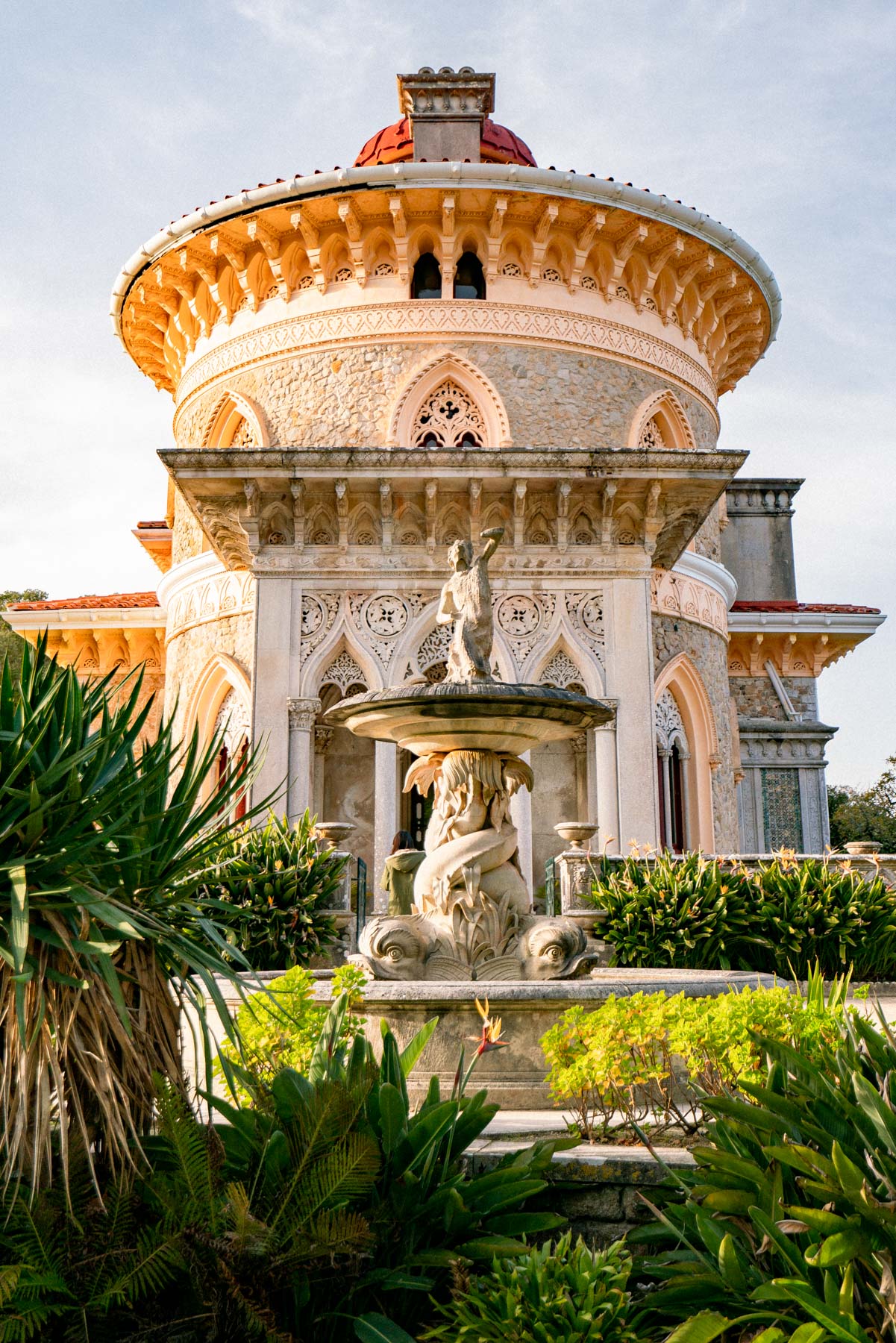
History of Monserrate Palace
Imagined by Sir Francis Cook, an English millionaire, Monserrate Palace served as a summer home not only to Cook’s family, but for the various knacks he acquired from his world travels. An intrepid explorer, Cook was keen to display his passion for exotic places through architecture.
There’s no denying he was successful in his pursuit. Visitors can easily mistake Monserrate Palace for the elaborate palaces of Mexico, India and Arabia. With so much intricate beauty, this is an experience you won’t want to rush.
Things to see at Monserrate Palace:
- The Music Hall
- The Main Hall
- Beckford Waterfall
- The Library Door
- The Ruined Chapel
- Mexican Garden
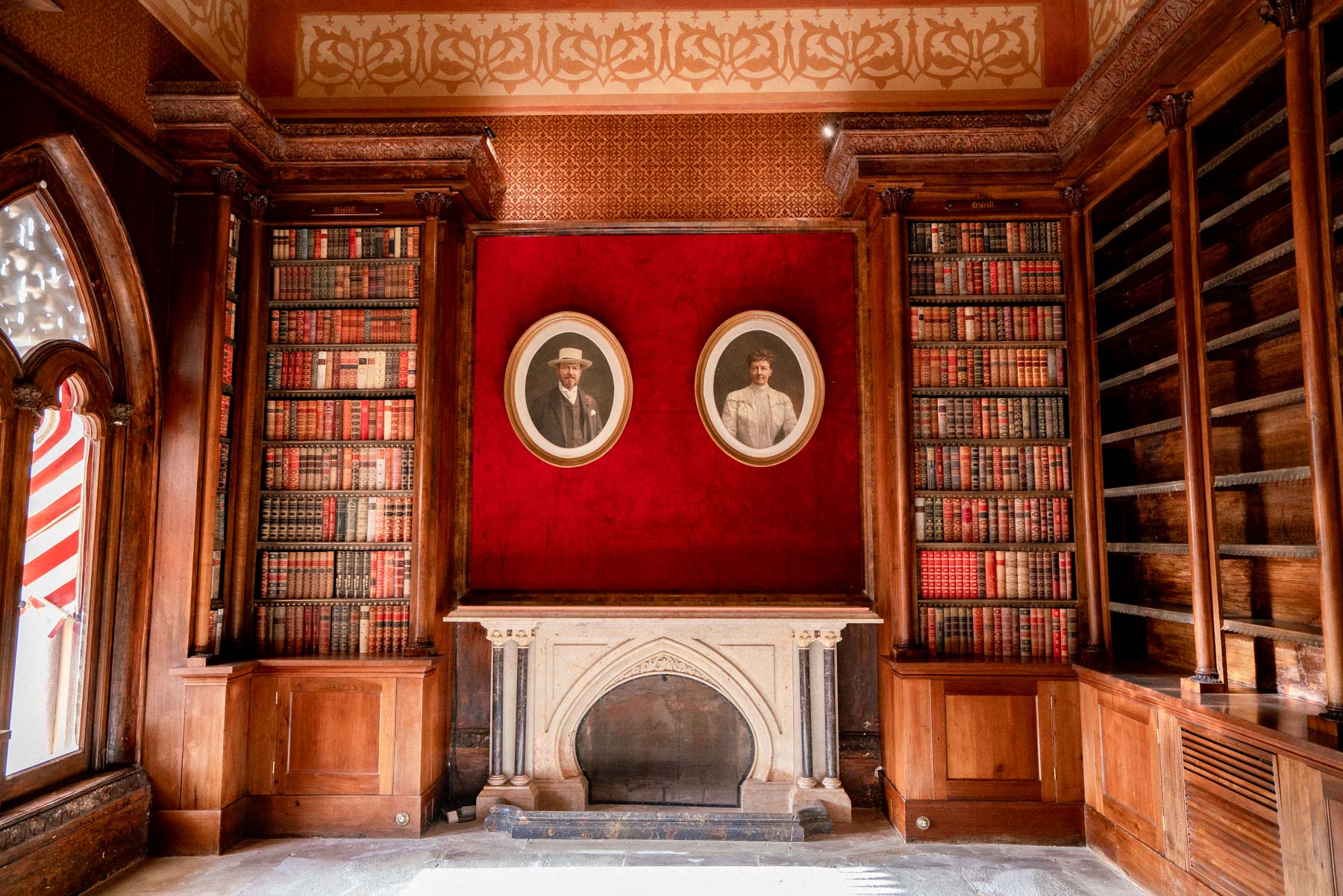
Monserrate Palace admission:
- The entrance fee for Monserrate Palace is €8/€6.50/€6.50 (adult/child/senior).
- Admission includes access to the palace and gardens.
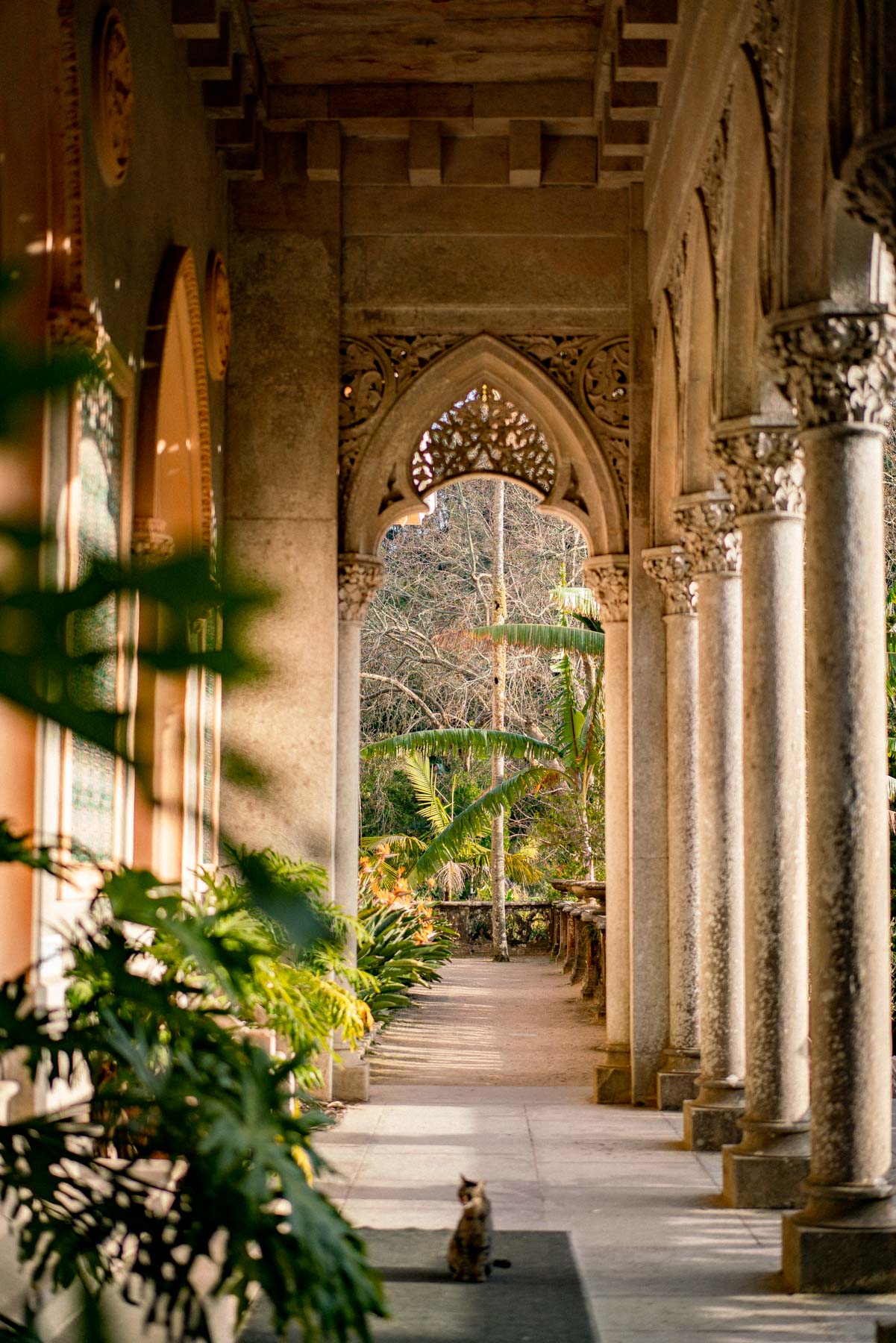
#3. Quinta da Regaleira
Designed in the late 1800s, Quinta da Regaleira is one of the most incredible castles in Sintra. The whimsical gardens at Quinta da Regaleira mimic ancient secret orders, full of hidden tunnels and concealed symbolism that speak to a time since forgotten.
This Sintra palace is the passion project of António Augusto Carvalho Monteiro, an eccentric millionaire eager to appease his ideologies and bewildering whims.
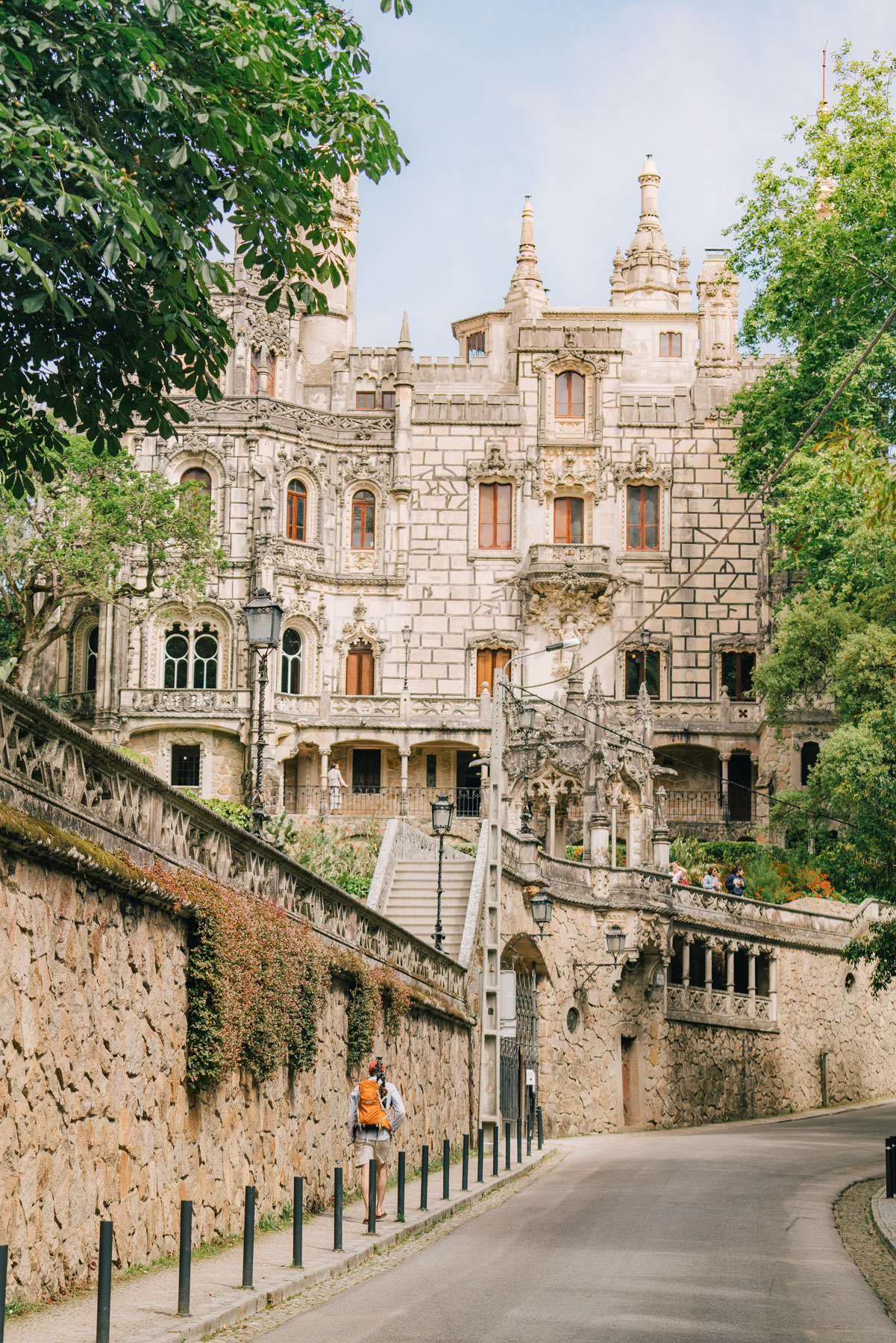
With a strong passion for alchemy, Masonry and the Rosicrucianism, Monteiro hired renowned Italian architect Luigi Manini to bring the vision to life.
Focusing on Manueline, Renaissance, Medieval and Classical styles of architecture, both men were known for their eclectic personalities. So it’s only fitting that the end result turned into one of the most beautiful Sintra castles.
The end result was an estate that housed the palace, chapel and park with lakes, grottoes, fountains and wells.
Quinta da Regaleira was designed to fascinate, confuse and delight visitors with secret passages and hidden tunnels. Chief among them are the famous Initiation Wells, which seems to be the biggest draw at this beloved Sintra palace.
What’s with the Initiation Wells at Quinta da Regaleira?
The Initiation Wells are two wells that resemble underground towers (lined with stairs). The wells were used for ceremonial purposes (they were never used for water) that included Tarot initiation rites. The number of steps and the spacing of the landings is linked to Tarot mysticism.
It’s fascinating to imagine the wells being used for that purpose, which is why I consider this one of the coolest palaces in Sintra.
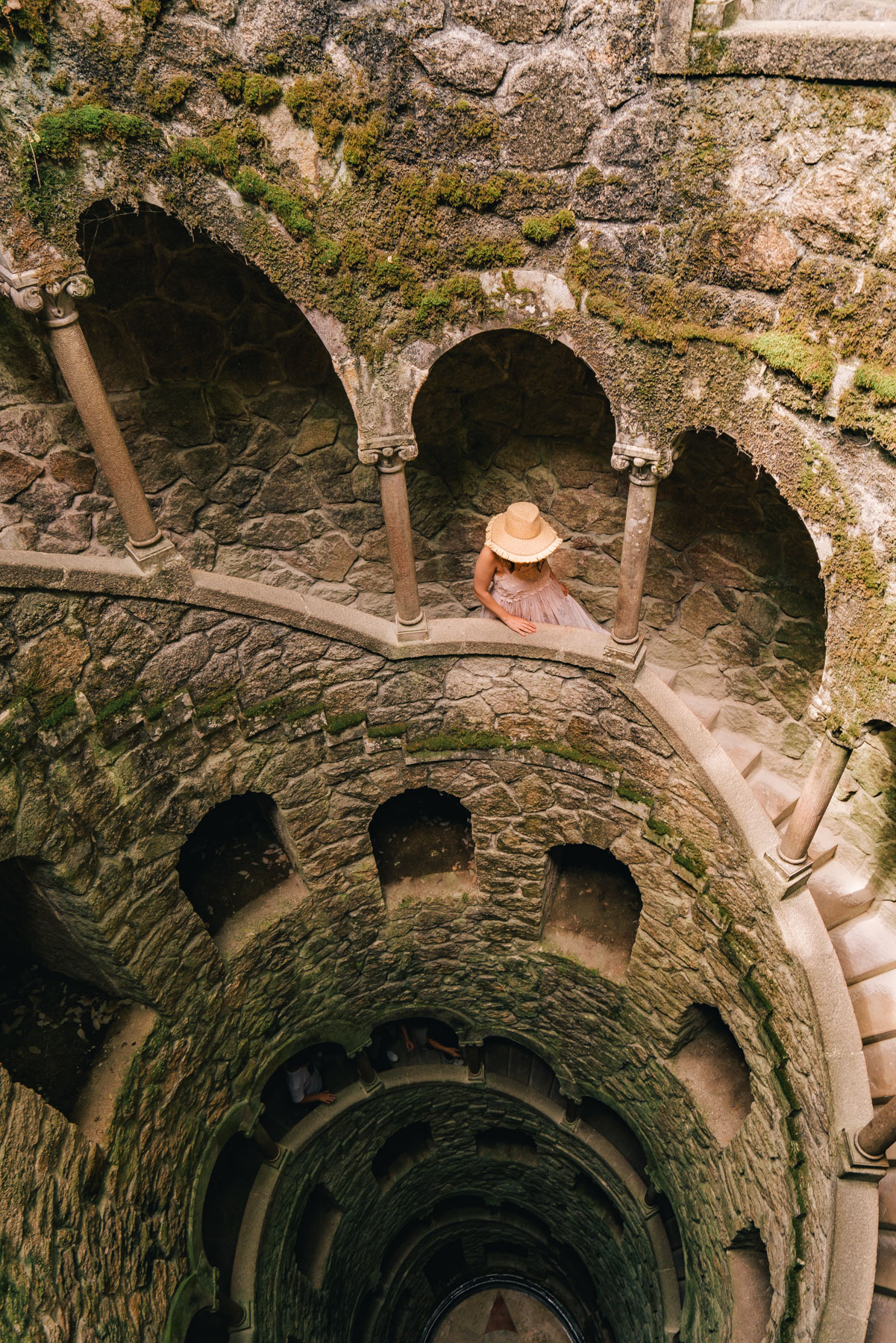
Things to see at Quinta da Regaleira
- Visit the Initiation Well – a mythical well used for initiations and rites of passages.
- Climb to the top of Regaleira Tower
- Explore the breathtaking gardens
- Tour the inside of the palace
Quinta da Regaleira admission:
- The entrance fee for Quinta da Regaleira is €6/€4/€18 (adult/child/family).
- Admission includes access to the house and grounds.
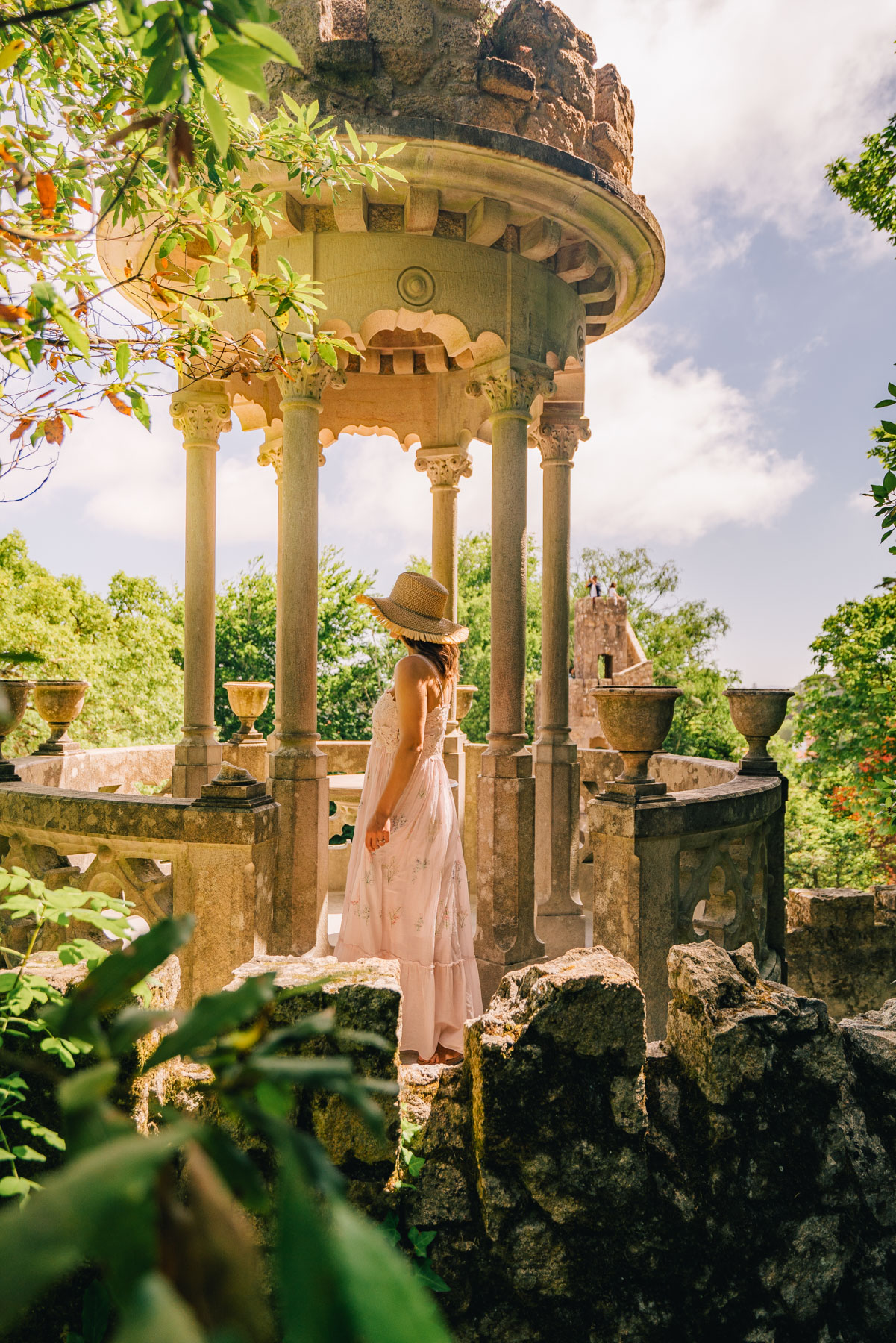
#4. The Moorish Castle (Castelo dos Mouros)
Up, up, up we go! Up the steep hillside to the Moorish Castle (Castelo dos Mouros). This hike is no walk in the park, but it’s definitely manageable. I guess you can also Uber to the gate, but where’s the fun in that?
When I first saw photos of Castelo dos Mouros I assumed it was the great wall of China. Getting to climb the ancient castle walls and lookout towers is an unforgettable experience. Which is why no list of the best castles in Sintra is complete without mentioning this gem.
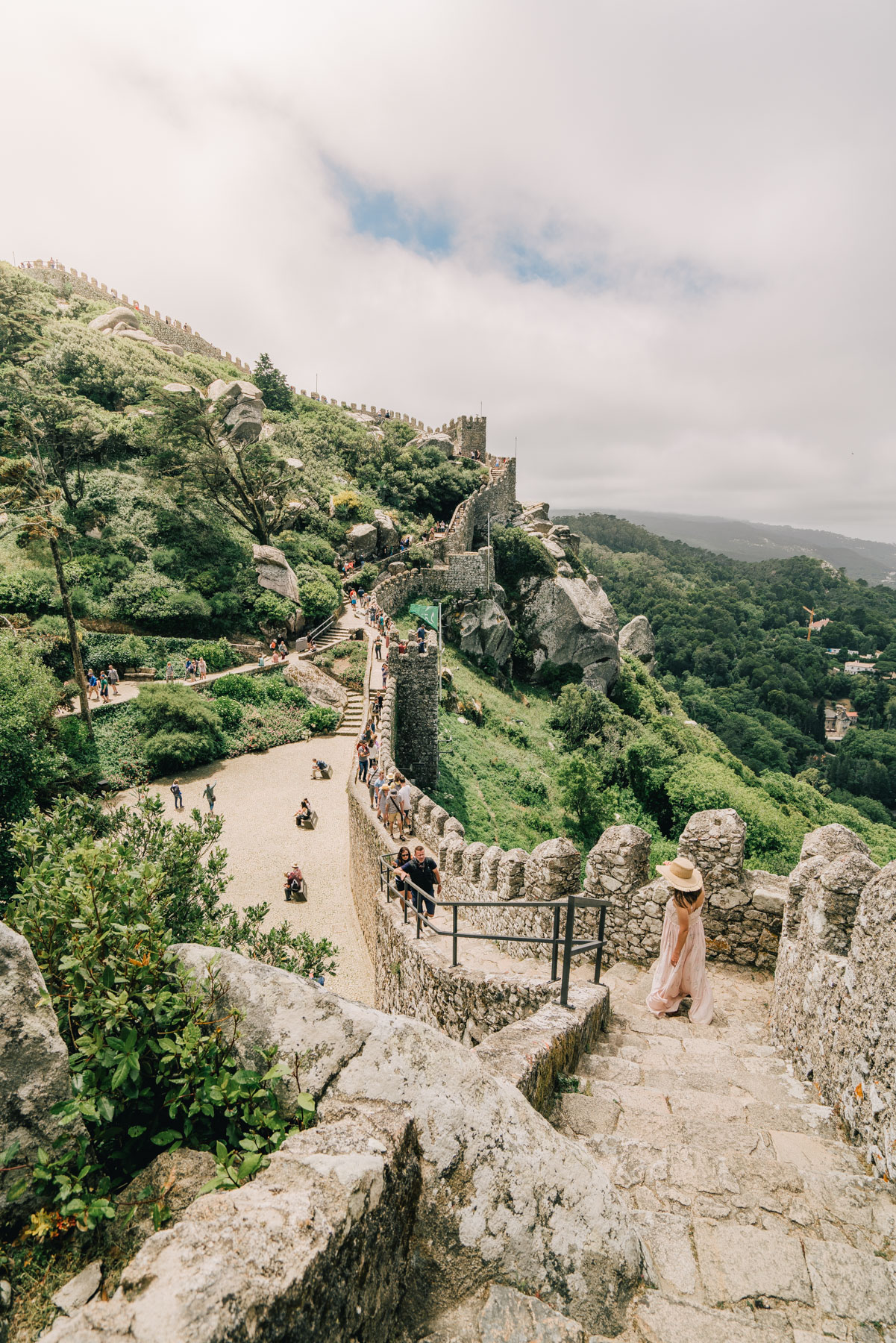
History of Castelo dos Mouros
Originally built in the 8th century, Castelo dos Mouros was positioned at a high vantage point to ensure protection over Sintra. This Sintra castle successfully fought off many invasion attempts before succumbing to the Christian crusade in 1147.
Portuguese Kings hoped to strengthen the defense of Castelo dos Mouros but the royal court favored Lisbon and didn’t want to invest in repairs. As expected, the castle was neglected, destined to eventually yield to the forces of nature and decay.
Fast forward to King Ferdinand II (same guy behind Pena Palace) who, fueled by a passion for the arts and middle ages, ordered the reconstruction of the castle. To this day, Castelo dos Mouros stands proudly, gates wide open, accepting visitors from all over the world.
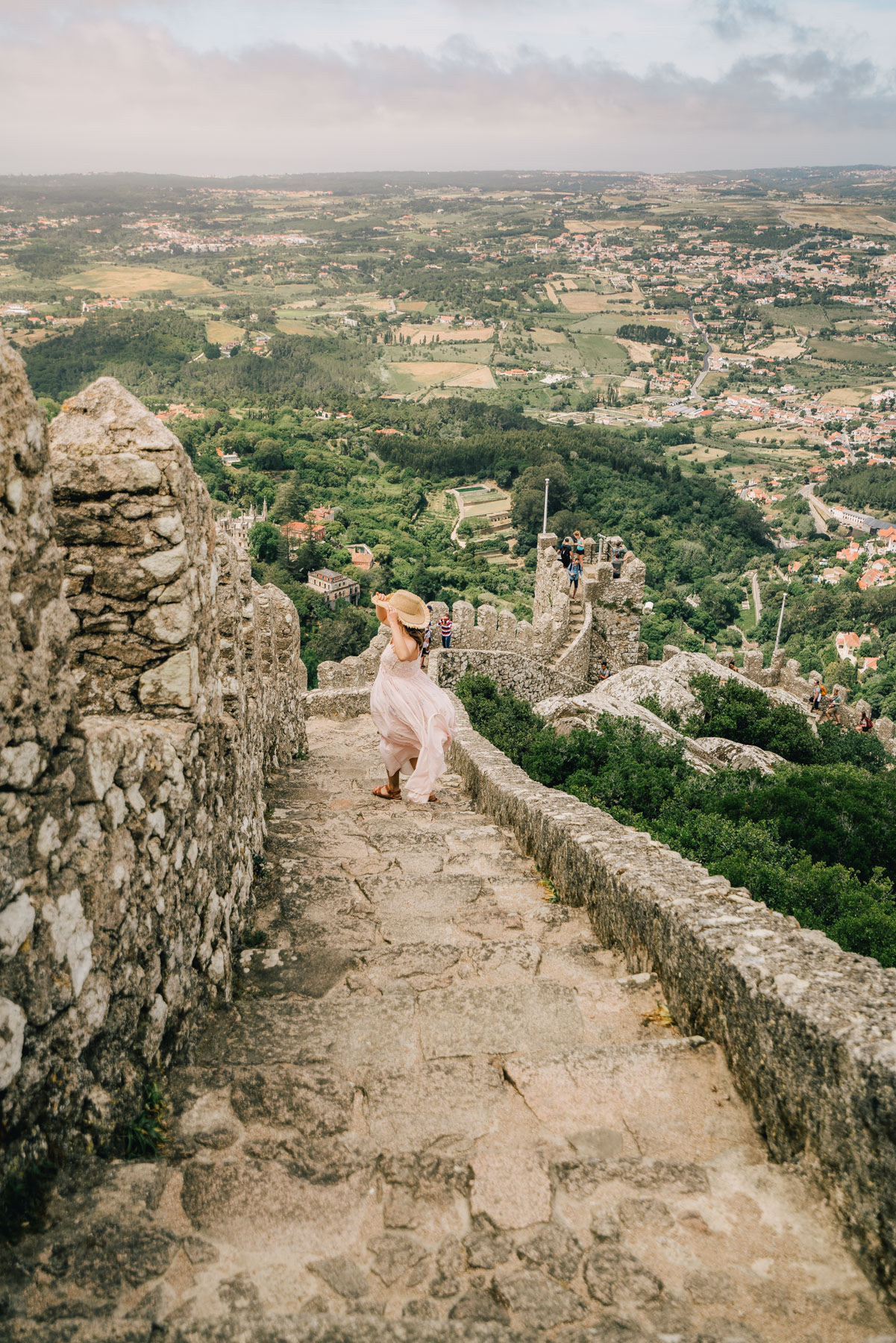
Things to do at Castelo dos Mouros
Honestly, just explore the grounds to your heart’s content. We spent an entire hour climbing up and down the endless steps, all the way to the highest point where Pena Palace can be seen on full display (if it’s not too foggy).
Castelo dos Mouros is a real treat for those that are interested in medieval castles and fortresses. This is definitely one of the coolest ancient castles in Sintra and you won’t want to miss it.
Castelo dos Mouros admission:
- The entrance fee to the Castelo dos Mouros is €8/€6.50/€6.50 (adult/child/senior).
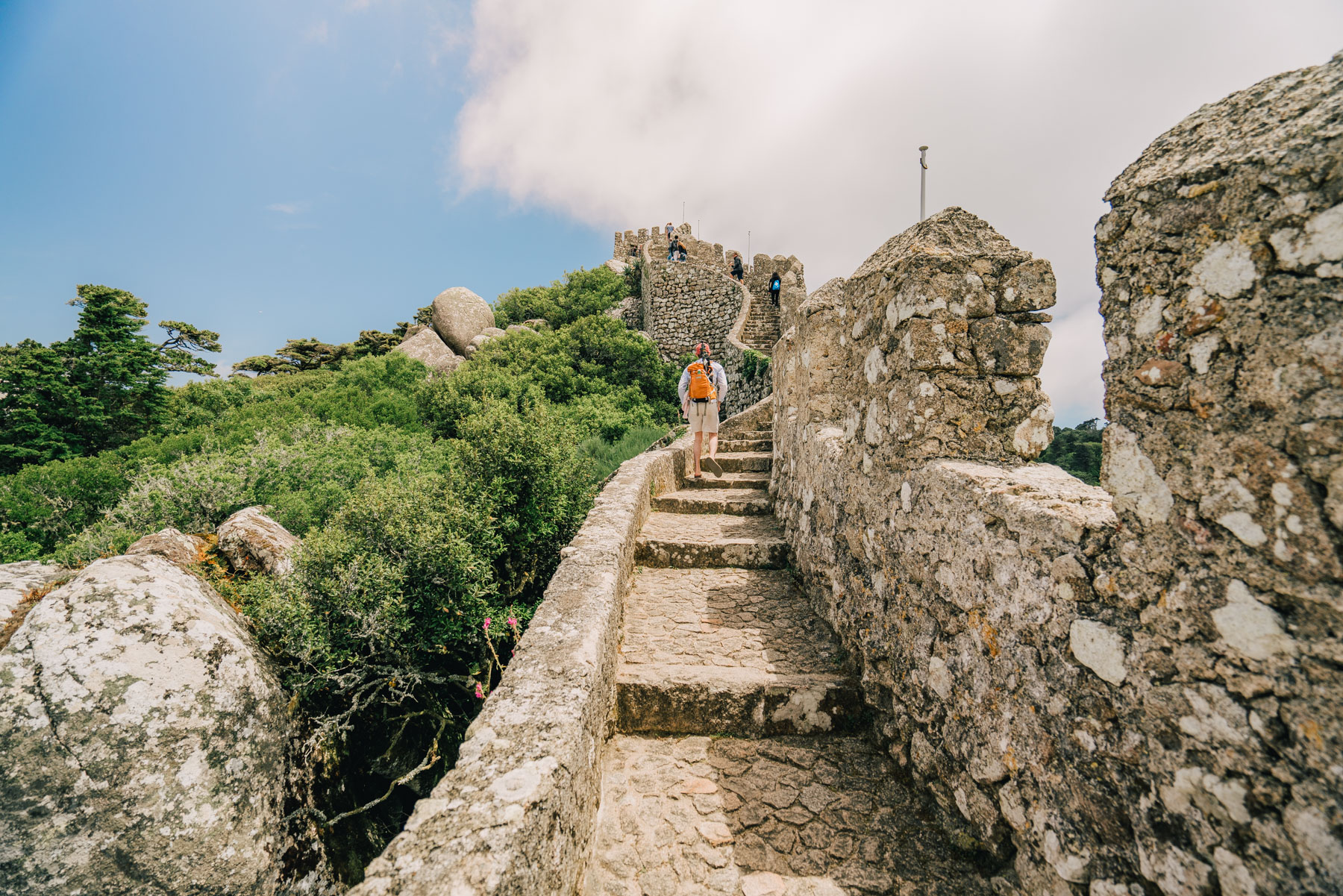
#5. National Palace of Sintra (Palacio Nacional)
Best known for the two iconic chimneys defining Sintra’s skyline, the National Palace of Sintra is the best-preserved medieval royal residence in Portugal.
Portuguese nobility have inhabited this Sintra palace from the 15th century to the 19th century, spanning the entire history of the Portugal. What an incredible thought.
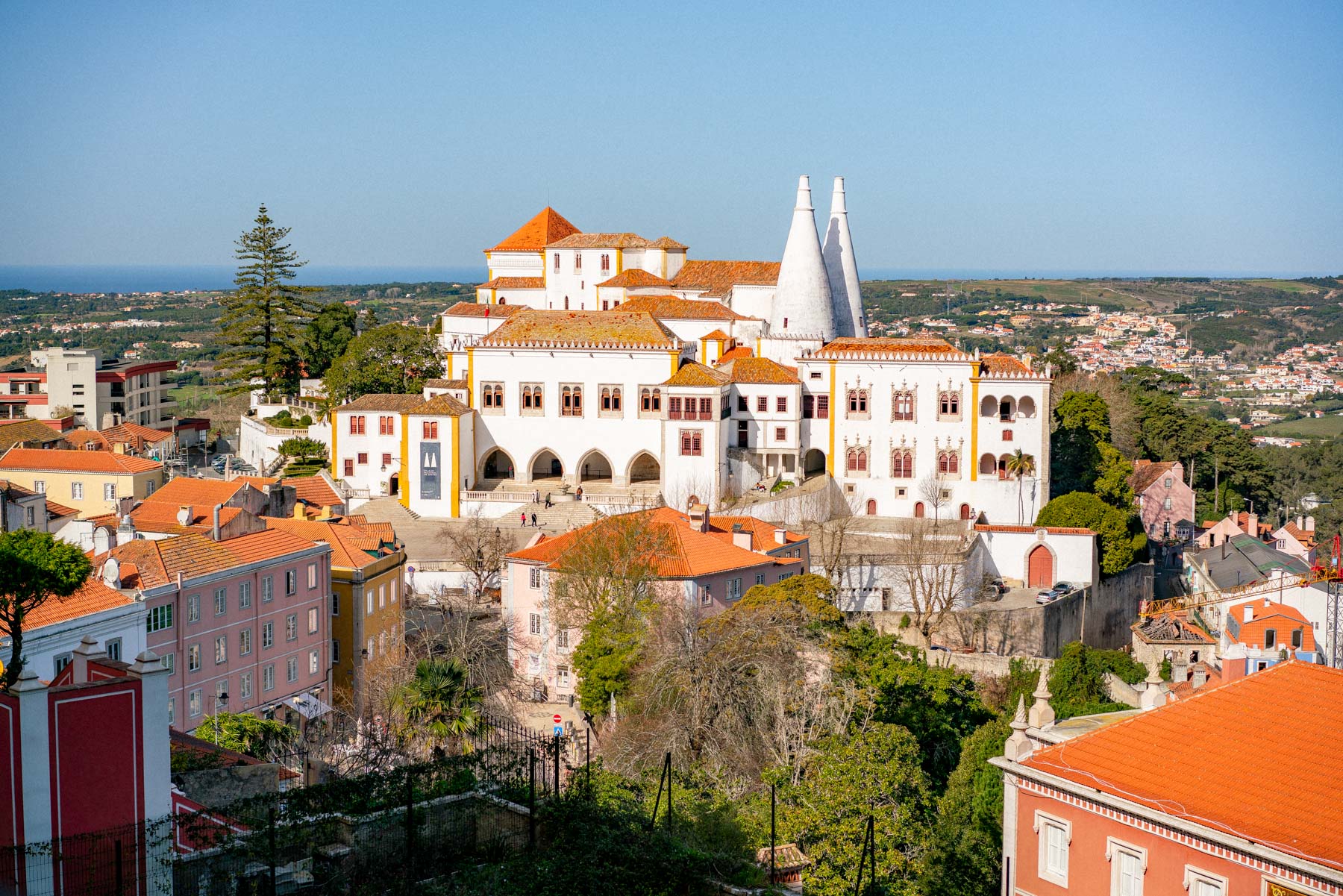
Located in the city center, and will likely be the first one you see as you embark on your epic tour of all the best castles in Sintra. My husband and I popped in during our third visit in Sintra and were so impressed with exhibits. This is one of the most interesting palaces in Sintra because everything is so well preserved.
I assumed we’d spend an hour max, but this Sintra palace was breathtaking and our self-guided tour ended up lasting two hours. I was especially impressed by the kitchen, it was massive!
The palace itself is a a hodgepodge of buildings constructed during various periods. The original building is hotly debated, but it’s assumed it dates back to the 10th or 11th century when Sintra was under Moorish rule.
From there, buildings were added, improved and expanded over the course of centuries to result in the epic Sintra palace we see today.
Palacio Nacional admission:
- The entrance fee is €10/€8.50/€8.50 (adult/child/senior).
- Visits last 1-2 hours depending on interest.
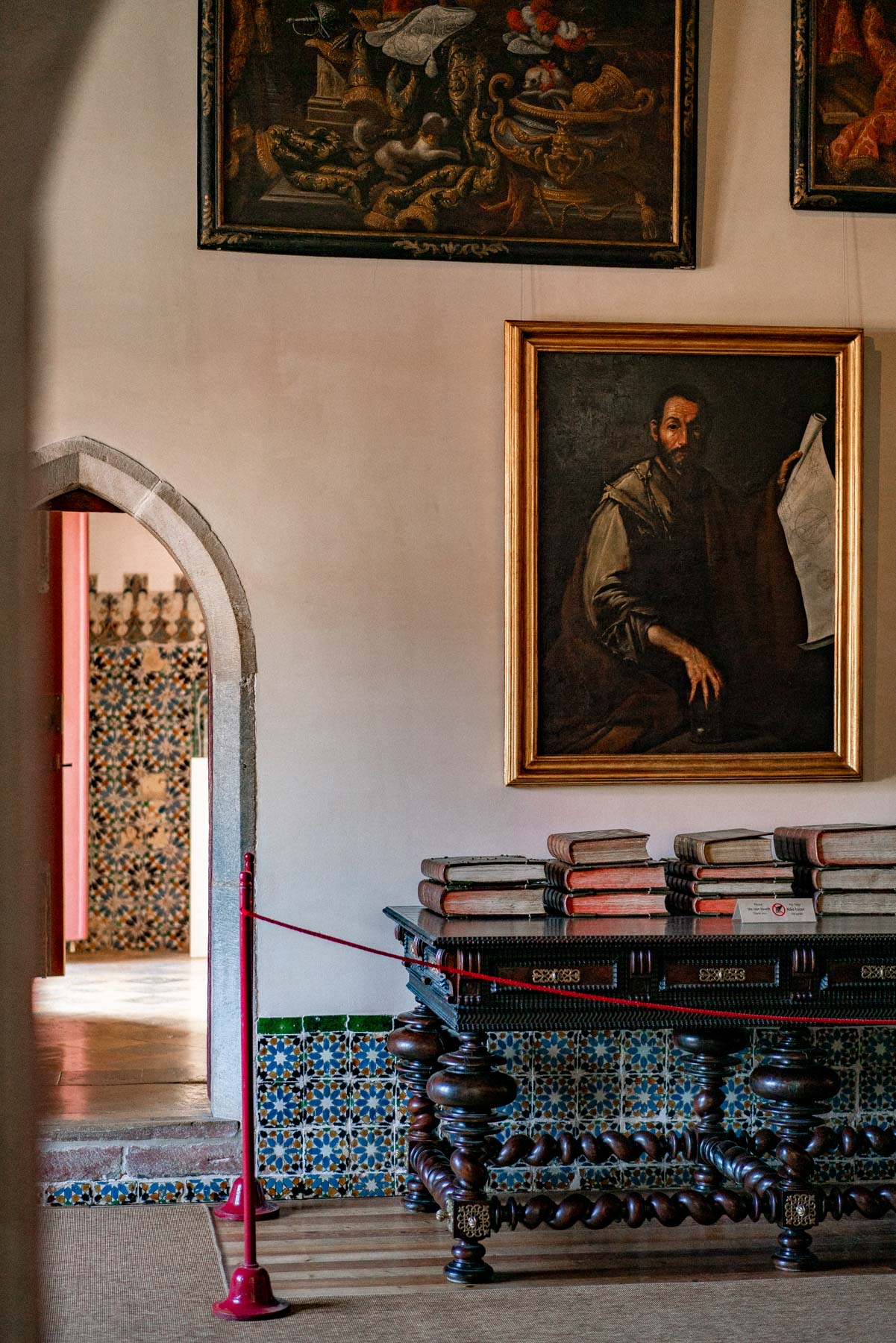
Getting to Sintra from Lisbon
The relaxing train ride from Rossio Station (in Lisbon) to Oriente Station (in Sintra) takes 45 minutes and costs a mere €2.20 euros per adult.
We were surprised to find that round trip fare for two adults set us back a mere €8.80 total. That’s nothing!
Since most visitors come for the castles, upon arrival, you have the option of walking to the palaces or taking a bus. Since 90% of our diet consisted of pastries, we decided to do the responsible thing and walk to the first stop, Quinta da Regaleira.
Personally, I recommend opting for the walk because it takes you through the charming town of Sintra at a leisurely pace. We didn’t have a hard time knowing where to go.
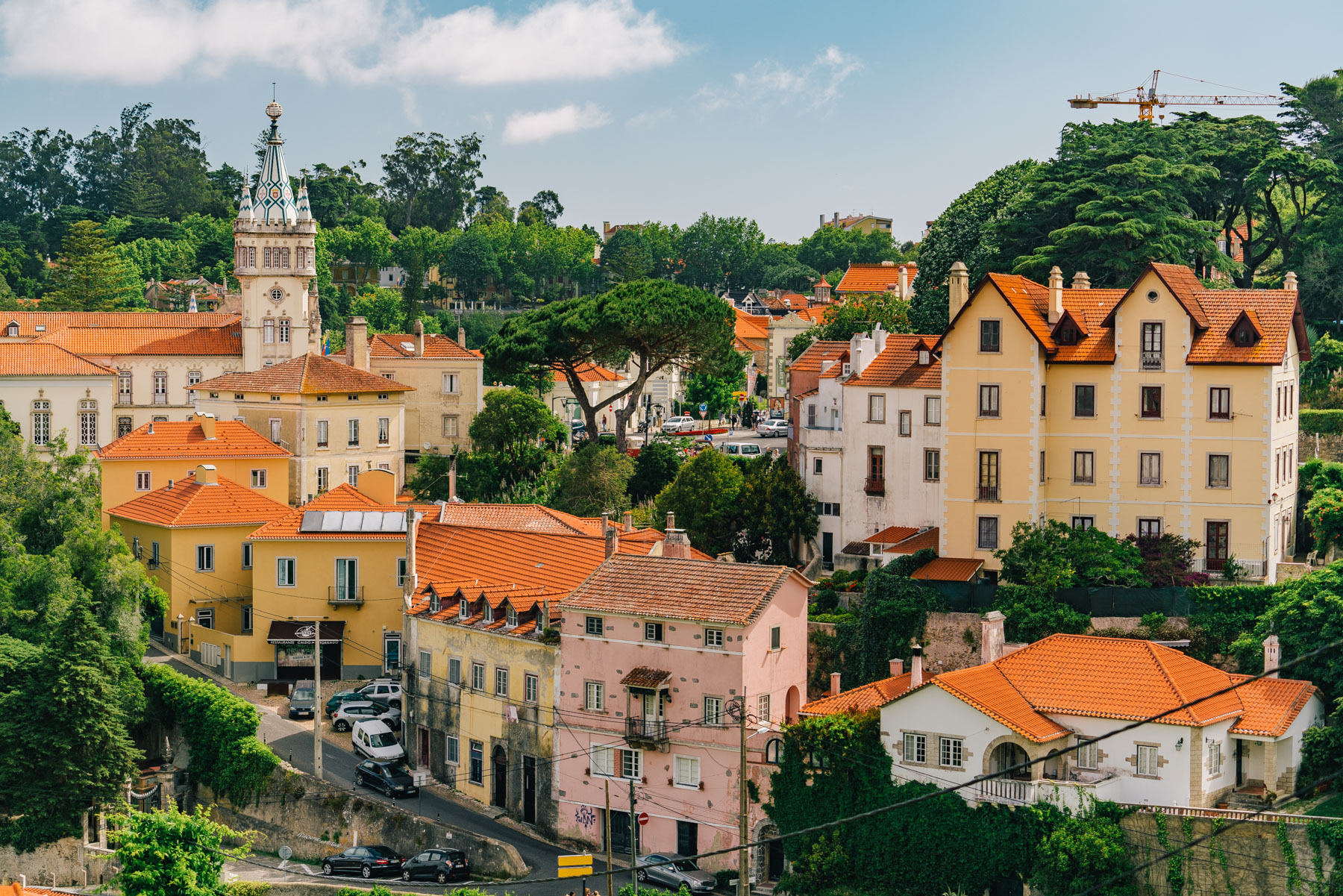
Best Palaces & Castles in Sintra (Post Summary)
In short, these are the best castles in Sintra and well worth a visit!
- Pena Palace
- Monserrate Palace
- Quinta da Regaleira
- Moorish Castle (Castelo dos Mouros)
- National Palace of Sintra (Palacio Nacional)
Map of the Best Sintra Castles
Until next time,
Antonina
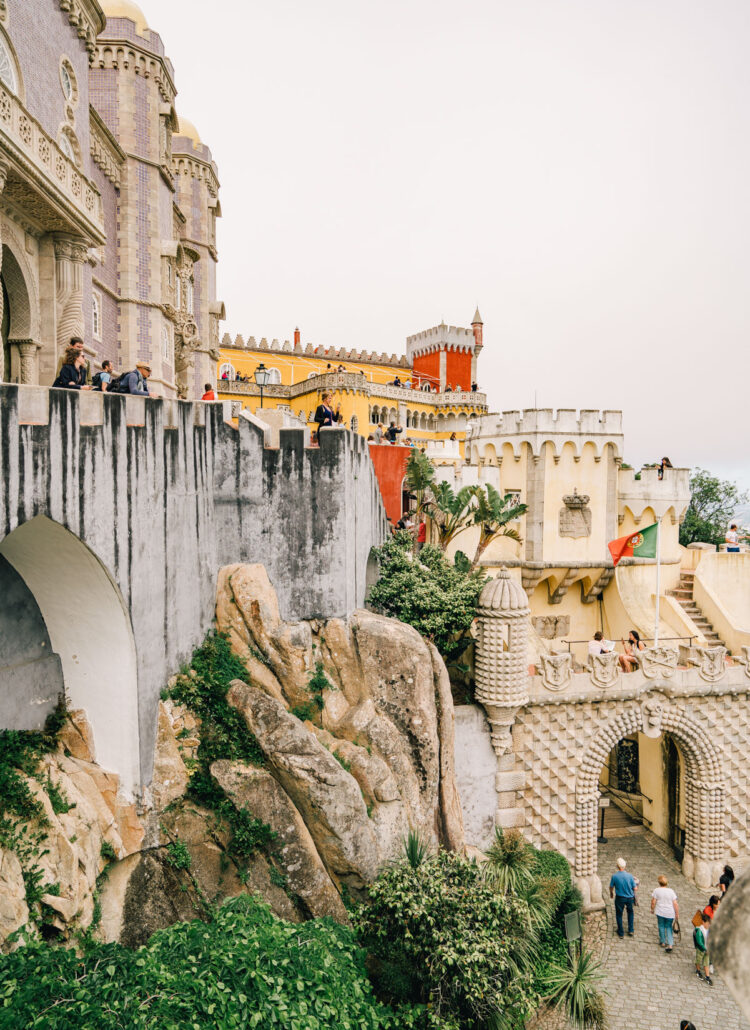
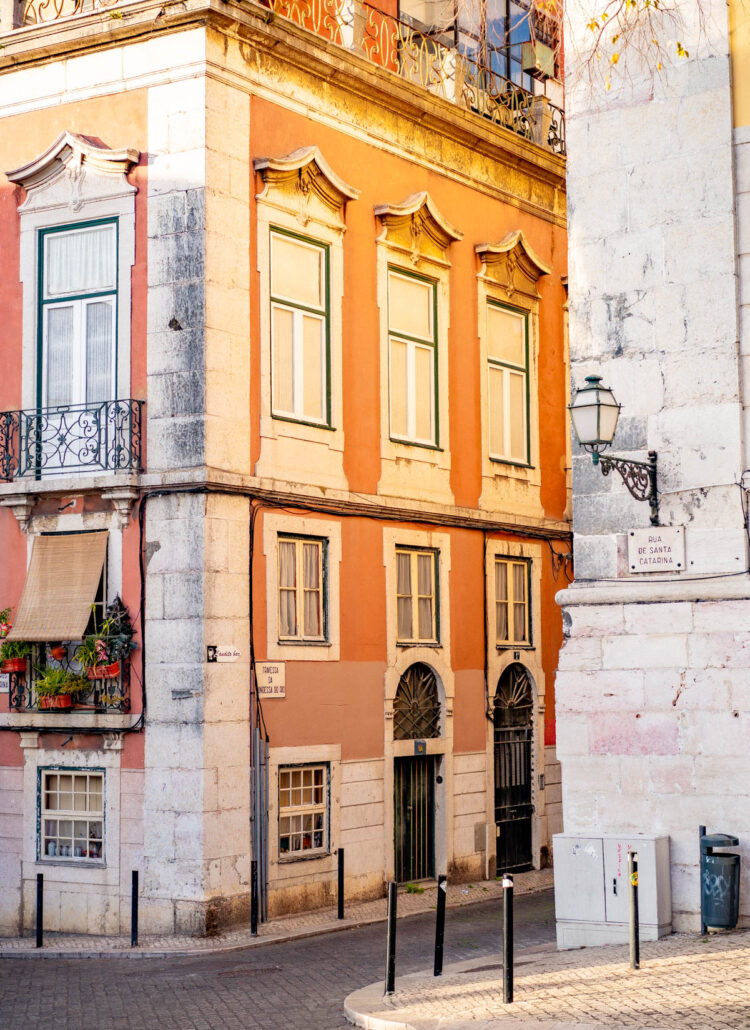
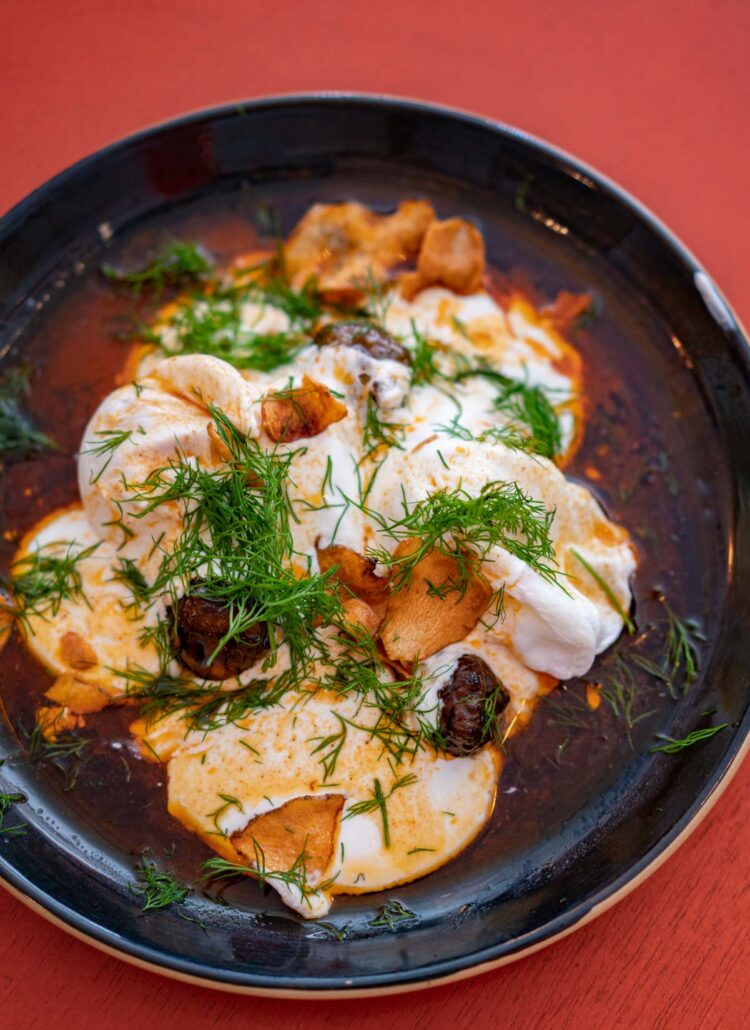

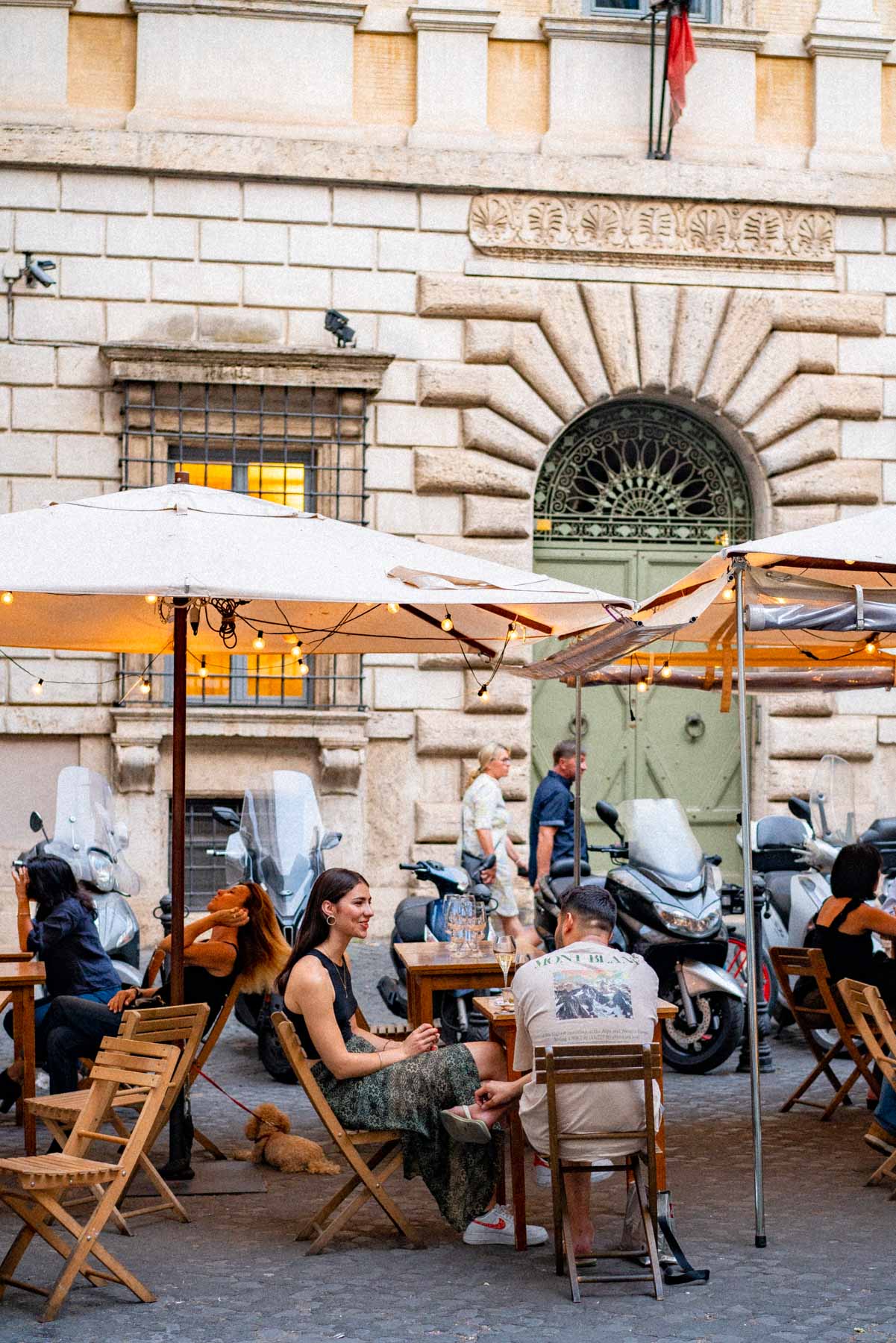
This was so helpful!! Getting ready to visit Sintra tomorrow for a day and was having a hard time deciding which castles to visit in our short time there. Thank you and looking forward to it!
I’m so glad to hear this post was helpful! I just returned from a third trip to Sintra and will be updating with more photos and tips soon. Hope you have a GREAT time!!